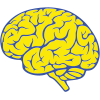Stimulant Intoxication
Resources for Patients and Caregivers
While the symptoms of overdose vary depending on the particular stimulant involved and the length and extent of use, the following are common symptoms of stimulant overdose: Rapid rise in heart rate and blood pressure. Shallow or labored breathing. Delirium or confusion.
Cluster Number:
Wiki Number: 50-Stimulant Intoxication
Diagnosis:
US Patients:
World Patients:
Sex Ratio:
Age Onset:
Brain Area:
Symptoms:
Progression:
Causes:
Medications:
Therapies:
Your content goes here. Edit or remove this text inline or in the module Content settings. You can also style every aspect of this content in the module Design settings and even apply custom CSS to this text in the module Advanced settings.
Youtube Video: What Happens When You Overdose?
Amazon or Library Book: On Chronic Alcoholic Intoxication
Click the book to link or order from Amazon.

